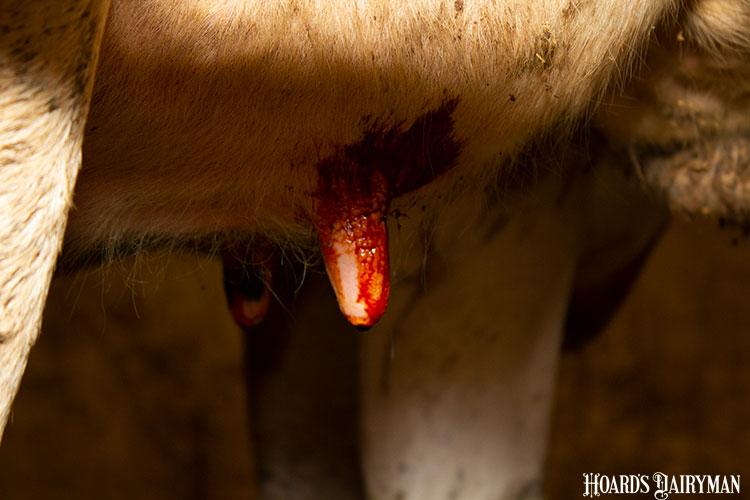
The 2014 National Animal Health Monitoring System survey reported that 96% of U.S. dairies used a predip, and nearly 97% used a postdip product. Getting the most out of your dip is vital to producing quality milk, but the market is expansive and competitive, providing dairy farmers with a number of options for their herd.
In a Michigan State Extension dairy team podcast, vet school antimicrobial resistance and large animal professor Pam Ruegg clarified that there’s no single “best” active ingredient to look for. To illustrate why that is, she explained that predips and postdips have very different functions.
“With premilking teat disinfection, our objective is to reduce bacteria on the teat skin that originated after the cow left the last milking and went out into its living area,” Ruegg said. This means predips should attack environmental pathogens so they’re eliminated before the teat sphincter is opened.
On the other hand, postmilking teat disinfection aims to reduce the bacteria left in the milk film on the outside of the teats after milking is completed. Ruegg pointed out that during milking, the teat is exposed to any milk left in the unit by previous cows. “That milk inside the cluster may well be contaminated with any bacteria that have been shed by the cows that have been milked before,” she cautioned, adding that for this reason, postdips should target contagious pathogens that may come from subclinically infected cows.
Ruegg noted that iodine is the most-researched compound for teat dips, but plenty of other proven products are effective and may work better in any given farm environment. Teat dips are regulated by the Food and Drug Administration and must prove to be safe before gaining approval, but they do not have to prove efficacy, Ruegg said. She encouraged choosing a dip from a company with a reputable background that has taken the effort to test its product’s effectiveness and publish those results. Farmers can ask their local suppliers about a product’s efficacy data, Ruegg added.
Real world results
The manufacturer’s data is a helpful starting point, but Ruegg reminded that those trials are done on visibly clean teats. “There is no teat dip anywhere in the world that has been proven to be efficacious if teats are covered in manure when they come in,” she emphasized. If a cow does come in with dirty teats, use a cloth towel to clean the udder before dipping. The last thing you want to do is put water on a cow’s udder before it’s going to be milked, unless you are going to completely dry it off, Ruegg said.
Putting a dip on clean teats is one way to help it do its job. Also pay attention to how the product must be stored, if it needs to and can be reconstituted on-farm according to its directions, and how it will be delivered to the cow. These factors have just as much of an impact on effectiveness between two equally efficacious dips, Ruegg said. If a product isn’t working as you expected, look into those on-farm factors before immediately deciding to change products.
“One thing I think is really important for producers not to do is to spend all your time switching among products trying to get some special magic product that’s going to solve all the problems,” she continued, adding that teat dips are designed to prevent mastitis, not cure it.








